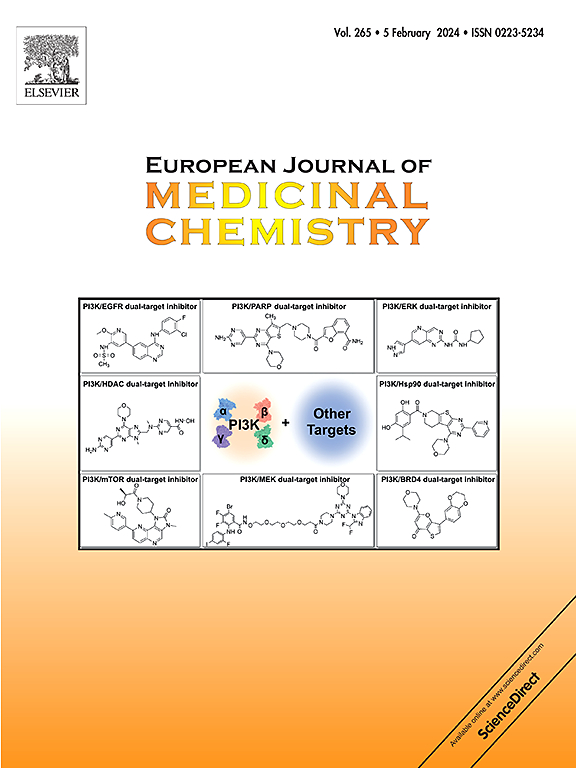Exploring indole-dihydropyrimidinone derivatives: Design, synthesis, biological assessment, SAR analysis, and evaluation of mode of action in experimental visceral leishmaniasis
IF 6
2区 医学
Q1 CHEMISTRY, MEDICINAL
引用次数: 0
Abstract
The emergence of drug resistance and the non-availability of vaccines encouraged us to identify novel chemical scaffolds as new anti-leishmanial agents. In doing so, a series of thirty-four indole-dihydropyrimidinone hybrid compounds were synthesized using the Biginelli multicomponent reaction. These synthesized compounds were tested against L. donovani in vitro and in vivo in experimental golden hamster model of visceral leishmaniasis. Compounds 4f and 4m were found to have promising anti-leishmanial properties against intracellular amastigotes (IC50 4.54 & 5.05 μM, respectively) with minimal cytotoxicity against J774.1 macrophage. 4f and 4m were tested in vivo, and only 4f effectively cleared the parasite burden (>65 %) in infected golden hamsters. Mode of action studies discloses that 4f induces oxidative stress-mediated mitochondrial dysfunction and impairment of ATP production and triggers apoptosis. SAR and PK studies revealed that compound 4f (indole-dihydropyrimidinone hybrid) may be used as a lead for developing future chemotherapeutic options for VL.


探索吲哚-二氢嘧啶酮衍生物:设计、合成、生物学评价、SAR分析和实验性内脏利什曼病作用方式的评价
耐药性的出现和疫苗的缺乏促使我们确定新的化学支架作为新的抗利什曼药物。在此过程中,利用Biginelli多组分反应合成了34个吲哚-二氢嘧啶杂化化合物。在实验金仓鼠内脏利什曼病模型中,对合成的化合物进行了体外和体内抗多诺瓦利氏杆菌的实验。化合物4f和4m对胞内无尾线虫具有良好的抗利什曼特性(IC50为4.54 &;5.05 μM),对J774.1巨噬细胞具有最小的细胞毒性。4f和4m在体内进行了测试,只有4f有效地清除了受感染的金仓鼠的寄生虫负担(>65%)。作用模式研究表明,4f可诱导氧化应激介导的线粒体功能障碍和ATP产生障碍,并引发细胞凋亡。SAR和PK研究表明,化合物4f(吲哚-二氢嘧啶酮混合物)可作为开发未来VL化疗方案的先导物。
本文章由计算机程序翻译,如有差异,请以英文原文为准。
求助全文
约1分钟内获得全文
求助全文
来源期刊
CiteScore
11.70
自引率
9.00%
发文量
863
审稿时长
29 days
期刊介绍:
The European Journal of Medicinal Chemistry is a global journal that publishes studies on all aspects of medicinal chemistry. It provides a medium for publication of original papers and also welcomes critical review papers.
A typical paper would report on the organic synthesis, characterization and pharmacological evaluation of compounds. Other topics of interest are drug design, QSAR, molecular modeling, drug-receptor interactions, molecular aspects of drug metabolism, prodrug synthesis and drug targeting. The journal expects manuscripts to present the rational for a study, provide insight into the design of compounds or understanding of mechanism, or clarify the targets.

 求助内容:
求助内容: 应助结果提醒方式:
应助结果提醒方式:


